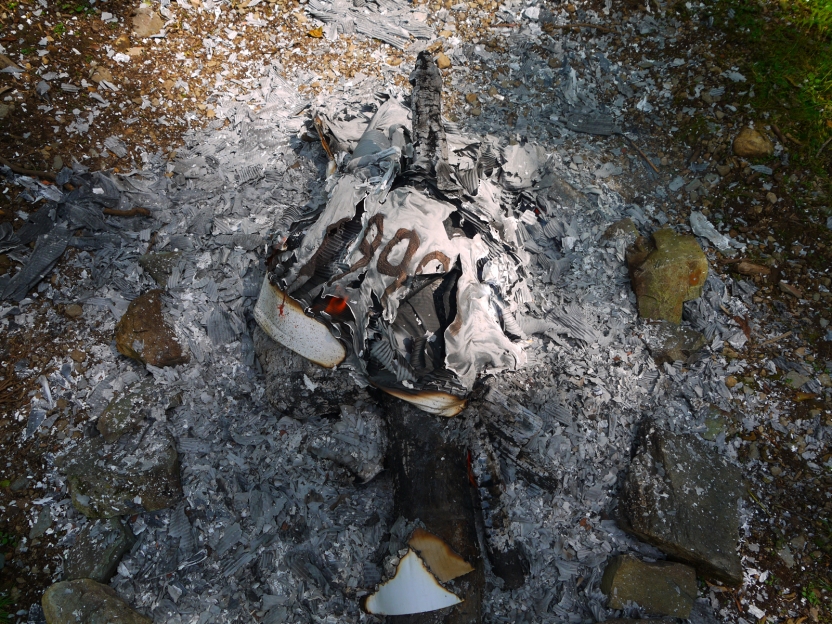- home
- contents
- contributors
- redux archive
- issues
- edition 13
/
/
/
/
/

collapse, betrayal, and subterfuge
Jacques Derrida writes, 'Man calls himself man only by drawing limits excluding his other: the purity of nature, of animality, primitivism, childhood, madness, divinity.' Derrida refers to Artaud’s drawings as an attack of the ‘subjectile’ in the following words: “Artaud sets fire to it, making holes in the paper here and there with a lighted match. The traces of burning and perforation belong to a work in which it is impossible to distinguish between the subject of the representation and the support of this subject, in the layers of the material, between the upper and the lower, thus between the subject and its outside, the representation and its other. It is really a question of a destruction. And to destroy all these limits that structure representation, other ‘gestures’ have to be found and the secret of other ‘intonations’." (US 88/89) Under these circumstances, the injuries and sufferings of the paper and the pictographic values of his writing/drawing open the site of mysterious forces which are at stake with the 'messages' of these sorts."
http://artaud-project.net/
Subjectile is a concept that names the interface between a support, a surface, (a screen), and a subjectivity. It tends to refer to the material conditions of a medium (originally painting or drawing) but it also implies a more general relationship in the texture of representation. The concept is developed by Antonin Artaud and further elaborated by Jacques Derrida, Jean Clay, and Georges Didi-Huberman amongst others. The Subjectile is a scene in retreat, states Derrida; it is a paradoxical concept as it is by its nature not definable, nor indefinitive. Ambiguity surfaces in the pairing of couples, drawing lines between ‘subject’ and ‘object’, ‘memory’ and ‘screen’, limiting any attempt at being explicit in questions of human agency and genealogy. Drawing these limits forfeits any bias in fidelity to the human animal and/or object inanimate. The loss of any distinction between purification and translation in the process (an idea developed from Bruno Latour in ‘We have never been Modern’ 1991), has naturalised scientific objectivity and therefore blocks the animist dimension from presentation.
The coming into view of the residues of State power, or of the collapse of administrations, from a number of equally ambiguous starting points is similarly characterised by rupture: holes, burns, and tears appear in caricatured representations of subject and objecthood as essentially conflicted. The new anthropomorphic subject, (quasi-subject, or quasi-object), emerges as a leakage (of denials and bargains) in renege or betrayal. The Subjectile thus alerts us to this reflexive paradox, traced upon its ruin.